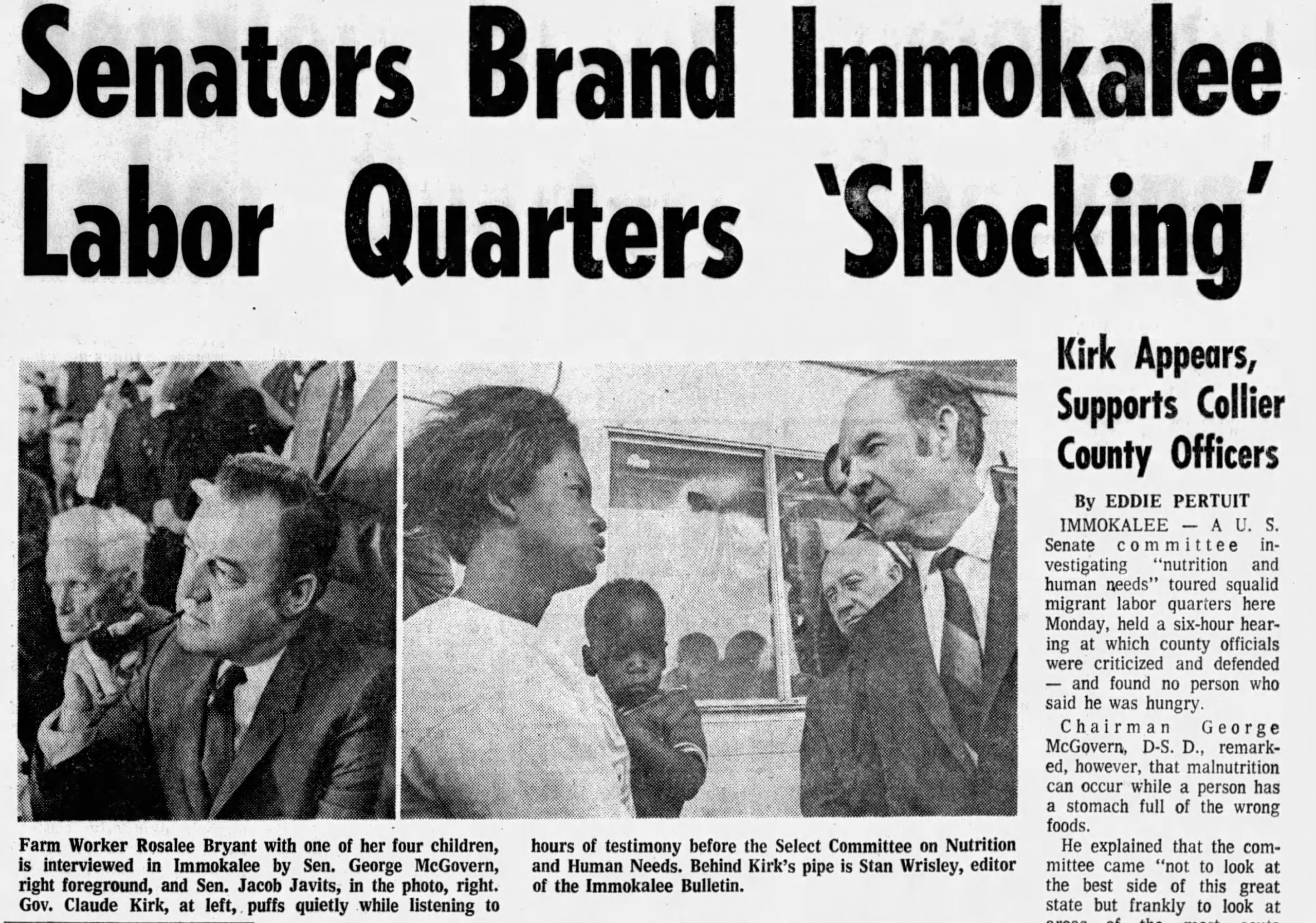In early 1969, Congress’s Select Senate Committee on Nutrition and Human Needs conducted an on-site investigation of hunger in the District of Columbia and three states, including Florida. In their March 1969 visit to Florida, the committee encountered a “pattern of misery and malnutrition” in Collier and Lee counties. One senator said that cattle and hogs were better fed than migrants in South Florida. Another found the conditions in Collier County, which had, so far, rejected food assistance for struggling families, to be both shocking and distressing.
The committee’s investigation also revealed that, even though a surplus commodities program was running in Fort Myers, many residents were either unaware of its existence or afraid to apply. One mother, who did not know about surplus commodities, told investigators that her family’s situation was so dire that she could not afford to feed her children breakfast, except for baby food for the youngest, and that other meals consisted of peas and beans. Senator George McGovern, who headed the investigation, observed that, “[p]eople should not have to prove abject destitution or starvation before they receive assistance…Certainly a county that is powerful enough to rocket men to the moon should be able to feed its own hungry people.”
In 1969, Florida was one of only seven states in the country in which no county was participating in the permanent Food Stamp Program. To make matters worse, many counties in Florida did not even participate in the Surplus Commodities Program. Some speculated that white government officials were disinclined to offer any kind of food assistance because they wanted to discourage immigrant and Black families from living in their counties. As one Florida state senator observed, “county officials [in Immokalee] don’t want [migrants] to come in there until there is work for them and a need for them [because] they fear free food programs would encourage…[migrants] to come early and stay late.” Collier County commissioners defended their indifference to the plight of migrant workers by calling them “federal people” who were not theirs to feed, even though Collier’s agriculture industry would have crumbled without migrant labor.
Overt racial bias was so great in 1969 in some counties in Florida that one Immokalee commissioner felt comfortable in dehumanizing migrant workers during the hunger committee’s visit by saying that, “These people are farm laborers. That’s all they are…They’ll never be anything different. They’re that kind of people, and they’ll be that way until they die.”
Counties also balked at the use of uniform criteria to determine eligibility for federal food assistance programs. Some local officials attempted to justify their reluctance to participate in those programs by saying that they already assisted people that they feel are “entitled to special help,” which allowed counties to divvy out benefits based on racism and moral judgments as to whether the family deserved assistance.
At that time, counties in Florida that wanted to implement a Food Stamp Program were required to submit an application to the State Welfare Department. In turn, the welfare department was tasked with processing the application and forwarding it to the U.S. Department of Agriculture (USDA) for approval. Although Orange County applied with the department to run a Food Stamp Program in November 1967, the state withheld its application for 18 months instead of sending it on to the federal government. The state claimed that it was retaining Orange County’s application pending confirmation that Congress would appropriate funds for this program. USDA insisted that there was no reason for Florida to keep the application — and that all applications should be forwarded and would be funded as money was available.
After media reports revealed that the food stamp application of Orange County was languishing indefinitely in the state’s welfare department, Florida finally forwarded the application on to USDA.
Within 15 days, USDA approved Orange County’s applications and, in November 1969, Orange County became the first county in Florida to run a Food Stamp Program.
